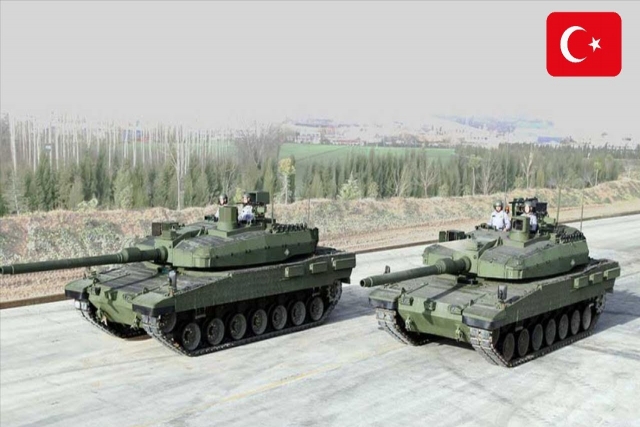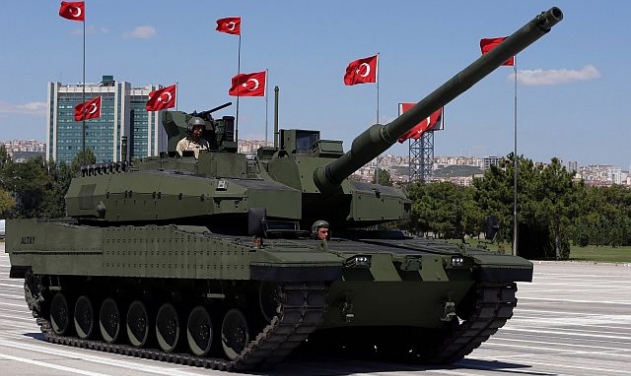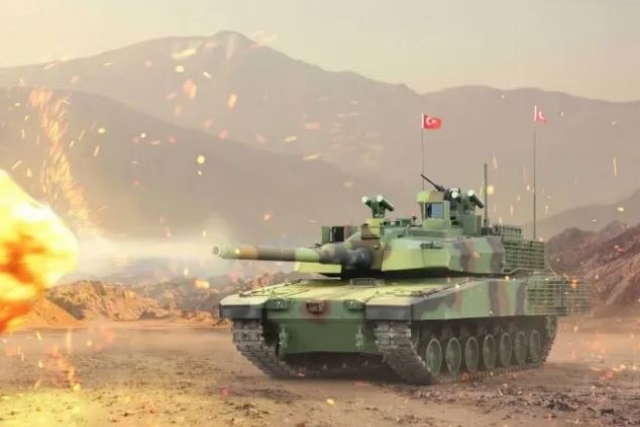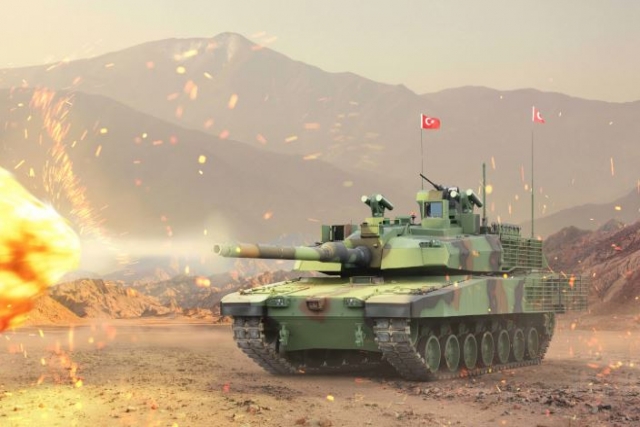Turkey Integrates S.Korean Engine with Altay Tank

South Korean-origin engines have been integrated onto Turkey’s Altay main battle tank (MBT), which could mean that its mass production could begin in two years.
Turkish land vehicle manufacturer BMC, the company that is undertaking the Altay project, signed an agreement with two South Korean companies, Doosan Infracore Co. and S&T Dynamics Co., for the engine and transmission.
The prototype for the Altay was unveiled at a 2011 defense show in Istanbul.
The next versions of the Altay would be powered by the country’s first-ever nationally developed 1,500hp engine, BATU. In May, Turkey completed the ignition of the engine. BMC Power developed the 12-cylinder, V-type, water-cooled and turbodiesel power unit. The engine will produce 1,500 horsepower and 4600 N-m of torque.
Assuming the main contractor role within the framework of the project, BMC will produce 250 Altay tanks and deliver them to the Turkish Armed Forces (TSK) under the contract.
Turkey initially kicked off the MBT project in 2007, but the procurement of an engine proved an obstacle for some time as Germany’s MTU refused to sell the powering unit. The battle tank's prototype was earlier powered by a 1,500hp diesel engine from MTU Friedrichshafen GmbH. The German Rheinmetall had also established a joint venture with BMC aimed at joint production of armored vehicles, particularly the main battle tank, Altay. However, the production and supply of the tank engine came to a halt following Berlin’s decision to limit arms exports to Turkey, a longtime NATO ally, following its involvement in the Syrian War.
Altay Specifications
The Altay tank is made of composite material and contains a new generation armor type.
The firing range of the tank is eight kilometers. With a crew of four (tank commander, gunner, loader, driver), the tank weighs 65 tons. Designed with superior maneuverability thanks to its suspension system, Altay also includes other weapons such as a 12.7 mm heavy machine gun and defense giant Aselsan-made Stabilized Advanced Remote Weapon Platform (SARP), as per Turkish outlet, Daily Sabah.
Thanks to the new computer technology, the fire control system is stated to be superior to normal tanks.
The Altay will also bear the domestic Active Protection System (AKKOR) developed by Aselsan, one of the vital protection systems for tanks.
In addition to tank armors, active protection systems are also of great importance against anti-tank weapons.
Reactive armors are ineffective against anti-tank missiles like the Javelin, defense industry experts occasionally point out that the Russians lost so many tanks in the war between Russia and Ukraine, emphasizing the need for active protection in tanks like the AKKOR.
AKKOR creates a full 360-degree protection shield.
It will detect incoming rocket or anti-tank missiles in a very short time with its high-tech radar.
With the help of the sensors on it, the physical destruction ammunition to be directed can explode when it is closest to the approaching anti-tank threat and neutralize it.













